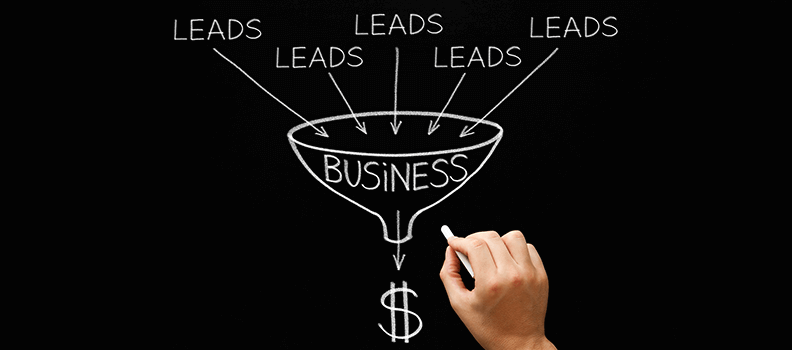As co-founder and CEO of Proposify, Kyle is passionate about product design and helping entrepreneurs increase sales. We had a chance to sit down with Kyle to hear more about proposal design software and learn some tips about how to assemble and pitch a winning proposal.
Tell us a bit about yourself. Why did you decide to create Proposify?
I never thought I wanted to be an entrepreneur when I was growing up. I was always creative and liked to draw, so I got into a graphic design college program right out of high school and started working for a small marketing agency when I was 20. After a few years of working in agencies, I got the itch to go freelance and build my own clientele doing web design and development. In early 2008, I had consumer debt, a wife, a brand new baby, and only a small handful of clients; but nevertheless, I decided to make the leap to full-time freelance. Within a month, I was making more money than I had made working for other people, so I figured this whole business thing maybe was for me. Eventually, I grew my freelance business into a small web agency with my business partner, Kevin Springer.
Over the years, I had worked on sales proposals at various agencies to win new clients. It was always very arduous. Account managers would email me Word documents, I would flow them into InDesign, and then they would need to sit at my desk with me to make edits. We had images from our past work they wanted to include, and I’d need to hunt down design files to use. I just thought, “There’s Basecamp for project management; why isn’t there a Basecamp for proposals?”
So that’s where the idea was born for Proposify. Later, I dusted off the old proposal app idea and we soon acquired a federal grant to hire a dedicated developer (our now CTO, Jonathan Down) to code the first version of Proposify. In 2014, we sold off our agency, raised a small seed round of funding, and focused on Proposify full-time. As of this writing, we are a team of 15 in Halifax, Nova Scotia, we’re profitable, and over 3,000 companies rely on Proposify to close deals.
Though they certainly vary by industry, what are some of the general advantages that entrepreneurs and small businesses have over larger companies or agencies?
Specificity.
Regarding marketing/design/development agencies (which is the business I understand), the small market, which was once appealing to small web design agencies, is now cornered by DIY website builders like Wix and Squarespace. On the top end of the market, big brands like Nike and Coke, once ripe for the picking for large agencies to bill out millions to, are now building their own in-house design and marketing teams. So the big agencies are getting squeezed and now have to work with smaller budgets.
The mid-market is where there is opportunity. These companies are big enough to have a marketing budget but small enough that they can’t build in-house teams. They ultimately need to hire an agency that will solve their problem. So agencies need to clearly articulate their unique value proposition. It isn’t enough anymore to simply say, “We do great work.”
Smaller agencies are attractive because they can focus on a specific industry and/or horizontal niche. If you are an Italian food delivery startup that needs to increase online sales, would you hire a 1,000-person agency out of New York that does branding and PR, or are you going to hire the small agency that specializes in e-commerce for food brands?
Finish this sentence: “Today, in order to maximize the chances of getting a sale, a proposal can’t just look good; it also has to…”
Speak directly to the client’s pain point.
Too many business proposals contain a lot of fluff about the pitching company and jargon that’s meant to make the company sound smart but just confuses the client. But if you can focus in on what’s keeping the potential client up at night and make it very clear how you’re going to solve that problem, that will increase your chances of winning dramatically.
When creating proposals, what’s the most common mistake made by entrepreneurs?
Many entrepreneurs don’t include formal contracts with their sales proposals that need to be signed. As a result, the agreement is loose and spread out over emails and conversations, so clients can sometimes try to go back on what they initially agreed to.
Some entrepreneurs worry that a contract will seem overly formal or may scare off the client; but at the end of the day, it communicates that you are a professional entering into a business agreement. There needs to be protection on both sides, and the terms need to be spelled out and clear. If the client can’t accept that, then that should raise a red flag – and you should cut your losses and move on.
When putting a proposal together, how important is it to be knowledgeable about the previous interactions between the potential client and the salesperson or entrepreneur?
Usually, a business proposal is written by the salesperson or entrepreneur who qualified the lead early on. If that’s not the case, and the person writing the proposal hasn’t had any prior contact or relationship with the sales lead, he or she should spend some time with the person who did.
Nothing that goes into a proposal should be a shock to the client when they read it. They should already have a general idea of what will be proposed and how much it will cost. The proposal is just a tool to close the deal and make it official.
So when writing a proposal, you need to make sure you know what the client is expecting in terms of scope, timeline, and budget. There’s always room for little pleasant surprises or upsells, but the client should never feel shocked or overwhelmed when they open up the proposal.
Do you have any strategies for convincing a lead to accept and consider a formal proposal?
You should only send proposals to leads that are sales qualified. They need to be the right fit for your business to help them; otherwise, they’ll be disappointed and frustrated when issues arise down the road. But let’s assume you qualified your lead and they are anxiously awaiting your business proposal – perhaps even comparing it to a couple of your competitors before they make a decision.
Do not send them the proposal.
You heard that right. Don’t send it. Too many companies just email a proposal and wonder why they never closed the deal. Instead, book a meeting with your client and pitch the proposal in person or over video chat. Pitching the proposal allows you to walk the client through your approach and unique value proposition before they jump to the budget. If they have questions or concerns, you can address them right away.
Next, you need to impose a time constraint. Don’t ask for the deal and say, “So when can we start?” That makes you appear needy and reinforces to the client that you are supplicating them for their business. Instead, tell them something to the effect of, “Take some time to think it over. We have a lot in our schedule so we need a yes or no by X date; otherwise, we may not be able to fit it in.” This approach flips the power dynamic around so that the client wants to get in on your awesome deal before it’s too late.
If the date comes and goes without a decision, stick to your guns and tell them you need to move on. If the client needs more time to make a decision, you can tell them you’ll check in after a few months but that the original proposal is null and void. This way, they won’t come to you in three years expecting the same price and terms that were in the original proposal (I have had this happen before!).
What do you see in the future regarding the overall proposal process? How will it evolve?
I think we’re already seeing the sales proposal process evolving in terms of using specialized software. It wasn’t that long ago that virtually everyone used Word, Google Docs, or InDesign to write a proposal; and if they were really savvy, they might use EchoSign or Docusign to get the PDF signed by the client. More often than not, they just emailed a 15 meg PDF to their client, hoped and prayed that it wouldn’t bounce back, and received an email in return from the client saying, “Sure, let’s proceed.” I have printed, scanned, and faxed a signature many times before, and I’m sure I’m not alone. It’s dreadful.
Web-based business proposal software is changing all that. It makes it easier to share and reuse content, pricing, and images with your team, and it streamlines the process of getting sign-off. Your client enjoys a more seamless experience that makes you look professional; plus, you can see when they opened your proposal and how much time they spent on each section (kind of like Google Analytics for proposals).
Proposify isn’t the only proposal software on the market. There are a variety of tools out there with their own strengths and weaknesses. For us, I think the rise in competition shows that business proposal software is a growing submarket of sales enablement software (to use the buzzy tech term), and more companies are realizing the need for dedicated proposal/contact/quote software.
How will you find the sales prospects to whom you will want to send proposals? Start your free Salesgenie trial today!






